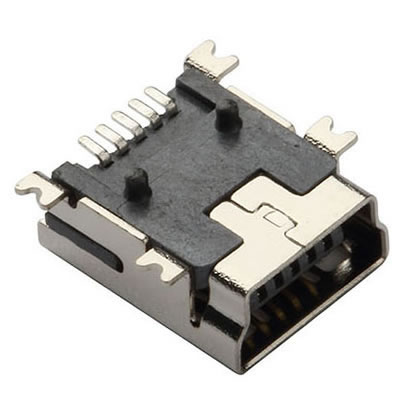USB socket interface issues
 2025-01-06 09:39:50
2025-01-06 09:39:50

USB socket interface issues are one of the common faults in modern electronic devices, especially when USB devices are frequently used. Users often encounter various interface-related problems. These issues not only affect the normal use of devices but may also lead to data loss or hardware damage. Common USB socket interface problems include device recognition failure, insufficient power, slow data transfer speed, physical damage, and poor device compatibility. Below is a comprehensive analysis of these issues and their solutions:
1. Device not recognized or unresponsive
USB devices are usually not recognized by the system due to driver conflicts, hardware failures, or poor contact with the port. In such cases, try unplugging and re-plugging the device to ensure a secure connection between the plug and the port. If the issue persists, check if there are missing or corrupted device drivers in the operating system, and update or reinstall the driver if necessary. If the problem still exists, try using other USB ports, especially those on the back of the computer, as these ports usually offer a more stable connection.
2. Insufficient power causing devices to malfunction
Insufficient power from the USB port is another common issue, especially when multiple devices are connected simultaneously. A single USB port may not provide enough power, especially for high-power devices such as external hard drives and printers. A practical solution is to use a USB hub with external power support to ensure each device receives stable power. For high-power devices, it's recommended to connect them to the rear USB ports of the host to avoid using front ports or hubs.
3. Slow or unstable data transfer speed
Slow USB data transfer speeds are usually due to incompatibility between the device and the port version or poor quality data cables. When a USB 2.0 port is connected to higher-speed devices (such as USB 3.0/3.1 devices), data transfer speed will be limited. To improve transfer efficiency, it’s recommended to use USB 3.0 or higher ports and ensure that both the device and the data cable support high-speed data transfer. If using long data cables, it’s best to choose high-quality, shorter cables to reduce signal attenuation, which can cause a drop in speed.
4. Physical damage or poor contact with the port
Frequent plugging and unplugging, physical impact, or dust entering the port may cause damage to the metal contacts inside the USB port, leading to poor contact and affecting the normal connection of devices. To avoid this, regularly clean the ports, especially when devices are frequently plugged in or out. Use compressed air to clean the inside of the port and ensure no debris or liquid inside. If significant damage to the port is found, the port may need to be replaced or repaired.
5.Device and port incompatibility
Device and USB port compatibility issues are also common, especially when using devices and ports with different versions of USB. For example, when a USB 2.0 device is plugged into a USB 3.0 port, it will work but the transfer speed will be limited, and the full advantages of the USB 3.0 port may not be utilized. For compatibility issues, adapters or converters (e.g., USB-A to USB-C adapters) can be used to resolve the mismatch and ensure proper connection and operation of the devices.
Summary
Although USB interface problems are common, most can be resolved with simple actions and reasonable device configuration. Regularly check the status of ports and data cables, avoid excessive plugging and unplugging, ensure compatibility between devices and ports, and use USB hubs with external power supply, among other measures, to effectively prevent and solve common USB interface problems. If the issue persists, professional repair or hardware replacement may be required to ensure proper device function and system stability.


